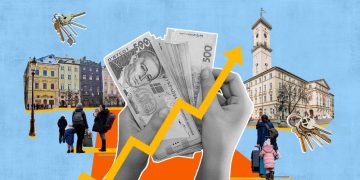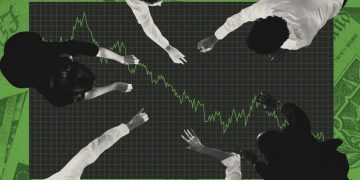Introduction
The European Central Bank (ECB) has played a crucial role in stabilizing the Eurozone economy, particularly in the aftermath of the global financial crisis and more recently during the COVID-19 pandemic. As part of its ongoing efforts to ensure economic stability and growth within the Eurozone, the ECB has implemented various stimulus measures, including interest rate cuts, asset purchases, and long-term financing programs for banks. These actions have sparked debates about whether they represent a necessary lifeline for the European economy or simply a temporary fix that may not lead to long-term growth. This article will explore the ECB’s stimulus measures, assess their effectiveness, and discuss both the short-term and long-term impacts on the Eurozone economy and financial markets.
1. ECB’s Stimulus Measures
In response to various economic challenges, the ECB has consistently employed a range of monetary policy tools to support the Eurozone economy. These measures have included:
Interest Rate Cuts
The ECB has lowered interest rates to historic lows in an attempt to stimulate economic activity. By reducing borrowing costs for businesses and consumers, the ECB aims to encourage investment, spending, and lending. Negative interest rates, which were introduced in 2014, were designed to push banks to lend more by charging them for keeping excess reserves with the central bank. This, in theory, would boost economic activity, increase credit flow, and support demand.
Quantitative Easing (QE)
To address economic stagnation and low inflation, the ECB has implemented large-scale asset purchase programs under its quantitative easing strategy. Through these programs, the ECB buys government and private sector bonds in the open market, injecting liquidity into the financial system. By increasing the supply of money, QE aims to lower borrowing costs, increase credit availability, and boost economic growth.
Targeted Long-Term Refinancing Operations (TLTROs)
The ECB has also used targeted long-term refinancing operations to provide cheap financing to banks, with the goal of encouraging them to lend to businesses and households. These operations are aimed at supporting lending to the real economy, particularly during times of economic uncertainty, when traditional lending channels may be restricted.
Pandemic Emergency Purchase Programme (PEPP)
In response to the COVID-19 pandemic, the ECB introduced the Pandemic Emergency Purchase Programme (PEPP) in 2020. This temporary asset-purchase scheme aimed to mitigate the economic fallout from the pandemic by ensuring that financial conditions remained favorable and that market liquidity was maintained during a period of significant uncertainty. The PEPP allowed the ECB to purchase bonds from both euro-area governments and private institutions, providing substantial support for the economy during the crisis.

2. Effectiveness of Monetary Policy in Addressing Eurozone Economic Issues
The ECB’s stimulus measures have had varying degrees of effectiveness in addressing the challenges facing the Eurozone economy. On the one hand, these policies have played a vital role in stabilizing financial markets, reducing borrowing costs, and supporting investment during periods of economic distress.
Stimulating Demand
The ECB’s low interest rates have contributed to increased borrowing by households and businesses. By making loans more affordable, the ECB has helped to stimulate consumer spending and business investment. This has been especially important during periods of economic downturn, such as the Eurozone debt crisis and the pandemic-induced recession, when private demand was weak.
Lowering Borrowing Costs
Through quantitative easing and TLTROs, the ECB has been able to lower borrowing costs across the region. This has helped to support both public and private sector spending, enabling governments to finance fiscal stimulus programs and businesses to invest in expansion. In some countries, such as Germany, these low borrowing costs have been crucial in supporting government spending and keeping fiscal deficits in check.
Boosting Market Liquidity
The ECB’s bond-buying programs have had a significant impact on financial markets, ensuring that liquidity remained plentiful even during times of heightened volatility. This has helped to stabilize bond markets, lower yields, and prevent a spike in borrowing costs, particularly for highly indebted countries such as Italy and Spain. Market participants have generally viewed these interventions as necessary to prevent financial contagion and ensure the smooth functioning of the Eurozone’s financial system.
However, while these stimulus measures have provided short-term relief, their long-term effectiveness in addressing underlying structural issues within the Eurozone remains a matter of debate. Some critics argue that the ECB’s policies have only served to mask deeper economic challenges, such as weak productivity growth, aging populations, and high levels of public and private debt. Others suggest that the ECB’s policies have been too focused on financial market stability and have not done enough to promote structural reforms that could lead to sustainable growth.
3. Short-Term vs. Long-Term Impact on Market Stability
In the short term, the ECB’s stimulus measures have played a crucial role in maintaining financial market stability. By injecting liquidity into the system, the ECB has helped to prevent sharp declines in asset prices and ensured that credit continued to flow throughout the Eurozone. In the immediate aftermath of the pandemic, for example, the ECB’s swift action to implement the PEPP prevented a potential liquidity crisis in financial markets, stabilizing bond and equity markets and calming investor fears.
However, in the long term, the ECB’s policies may have unintended consequences. The prolonged use of ultra-low interest rates and QE could lead to asset bubbles, as investors seek higher returns in riskier assets, such as equities and real estate. There are also concerns that these policies could exacerbate wealth inequality, as asset price inflation disproportionately benefits wealthier households and institutional investors. Furthermore, low interest rates may reduce incentives for structural reforms in Eurozone countries, as governments and businesses may rely on cheap borrowing rather than addressing long-term economic weaknesses.
Another potential risk is that the ECB’s policies could limit its ability to respond to future economic shocks. With interest rates already at historically low levels, the central bank has little room to cut rates further if another crisis were to arise. This could limit the ECB’s ability to provide adequate stimulus in the face of new challenges, such as another economic downturn or a geopolitical crisis.
4. Expert Opinions on Sustainable Growth
Economists and market experts are divided on whether the ECB’s stimulus measures can lead to sustainable economic growth in the Eurozone. Some experts argue that the ECB’s actions have been essential in supporting the region during periods of crisis and preventing a deeper recession. They point to the stability provided by the ECB’s policies as a critical factor in allowing businesses to continue operating and households to maintain consumption levels.
However, others argue that monetary stimulus alone cannot deliver long-term growth. Many experts believe that the Eurozone needs structural reforms to address its underlying economic weaknesses, including labor market inefficiencies, low productivity growth, and high levels of public debt. For instance, some argue that fiscal policies should be more focused on boosting investment in innovation, education, and infrastructure, rather than relying on monetary stimulus to prop up demand.
There is also a growing consensus that the ECB’s focus on financial market stability must be complemented by efforts to address the real economy. While financial markets are important, they do not always translate into tangible improvements for workers and businesses. In this sense, the ECB’s role in fostering long-term growth will require collaboration with national governments to implement policies that stimulate innovation, job creation, and productivity.
Conclusion
The ECB’s stimulus measures have provided a crucial lifeline to the Eurozone economy, particularly during times of crisis. They have helped to stabilize financial markets, lower borrowing costs, and stimulate demand in the short term. However, these measures are unlikely to lead to sustainable growth without deeper structural reforms that address the region’s long-standing economic challenges. While the ECB’s actions have been necessary to prevent immediate economic collapse, they cannot be relied upon as a long-term solution to the Eurozone’s problems. Moving forward, a balanced approach that includes both monetary stimulus and structural reforms will be essential to achieving lasting economic stability and growth in the Eurozone.






























